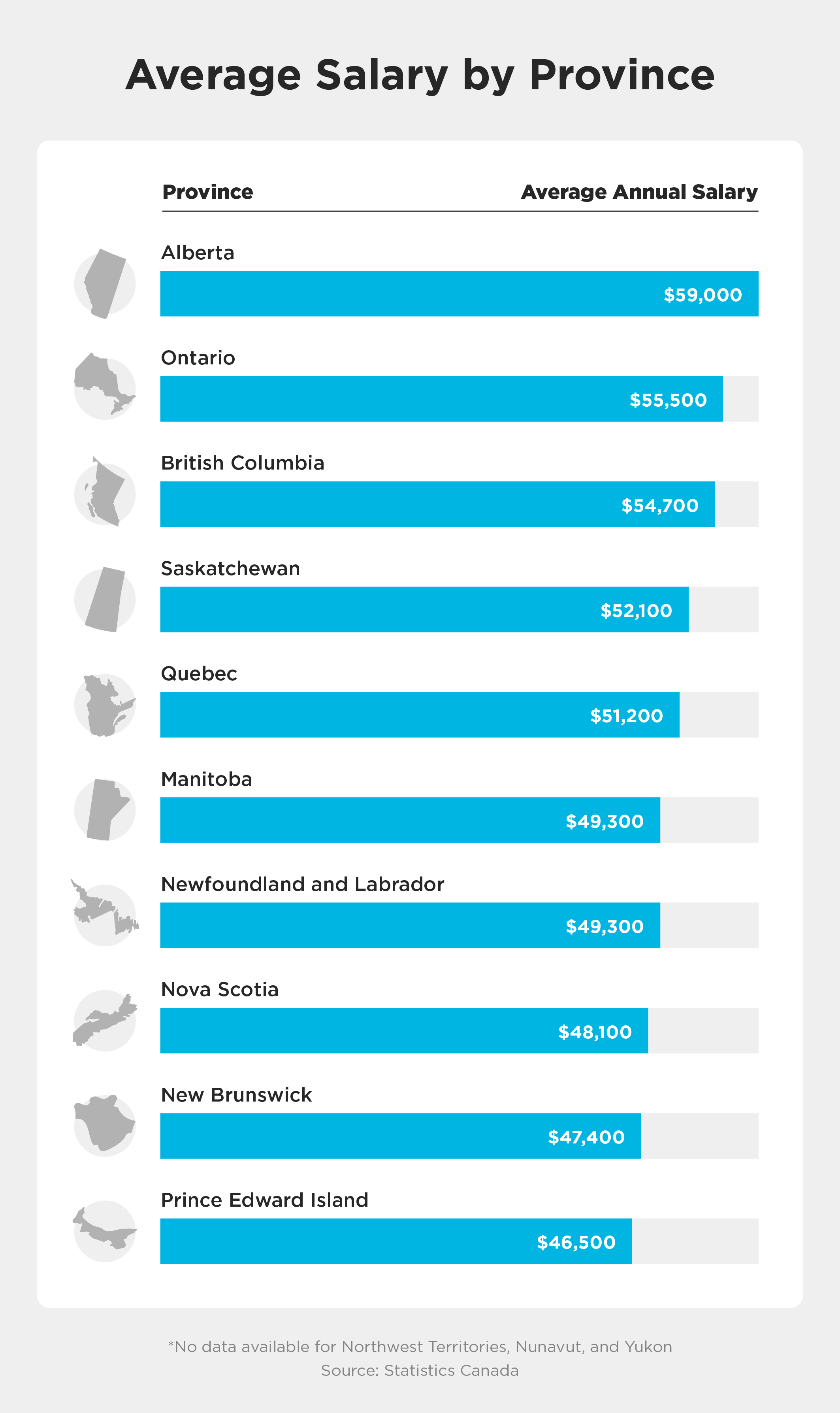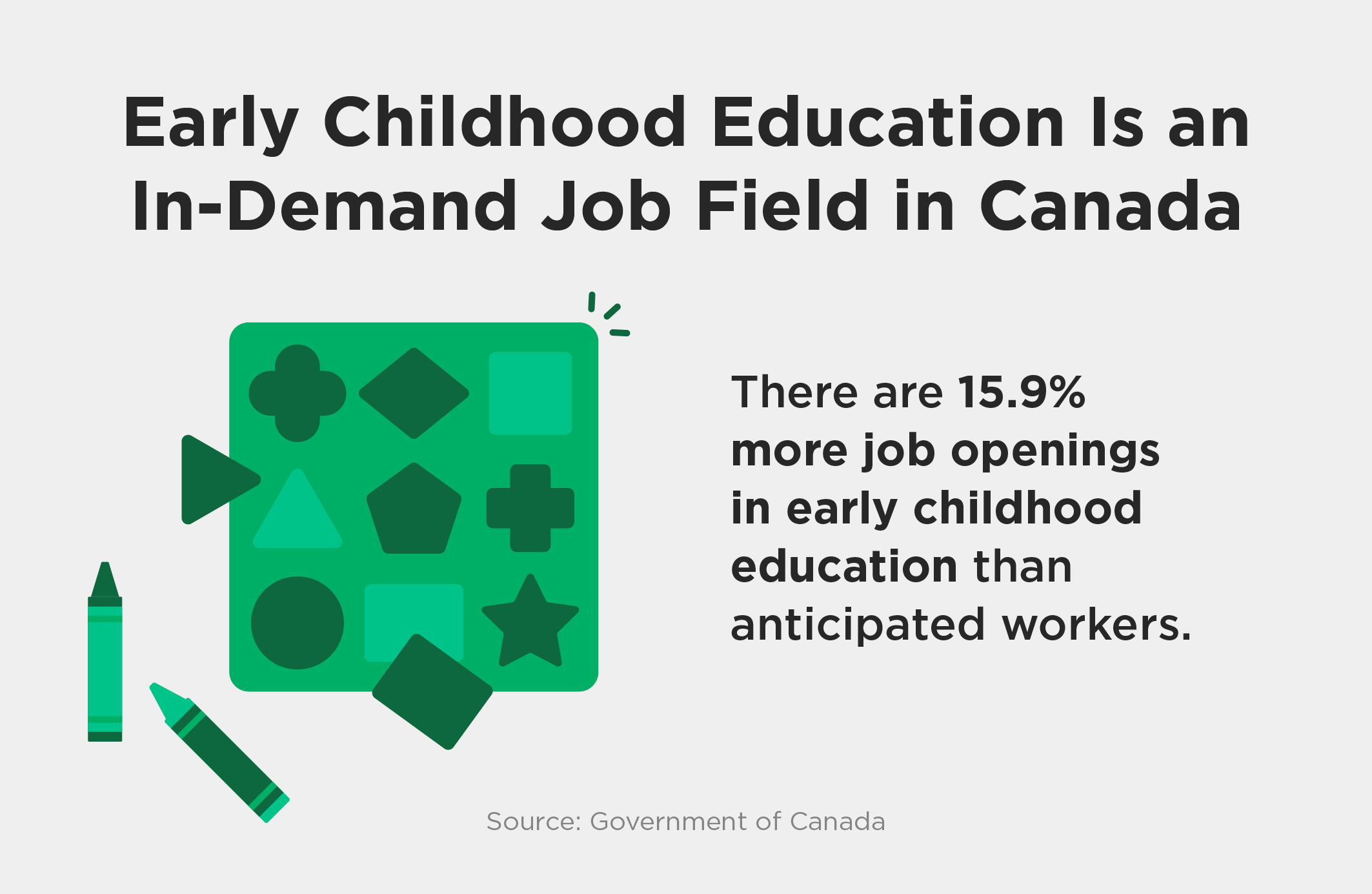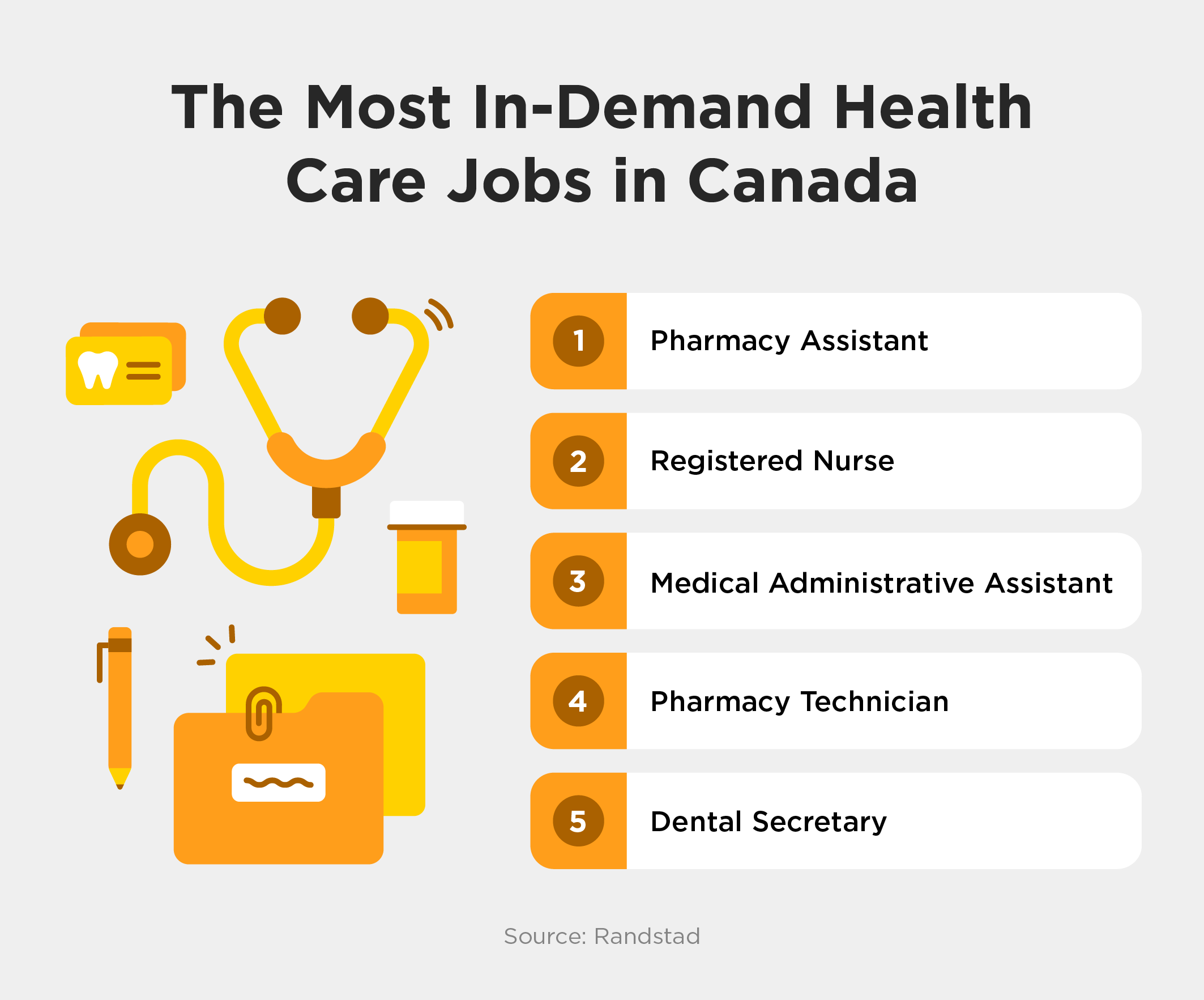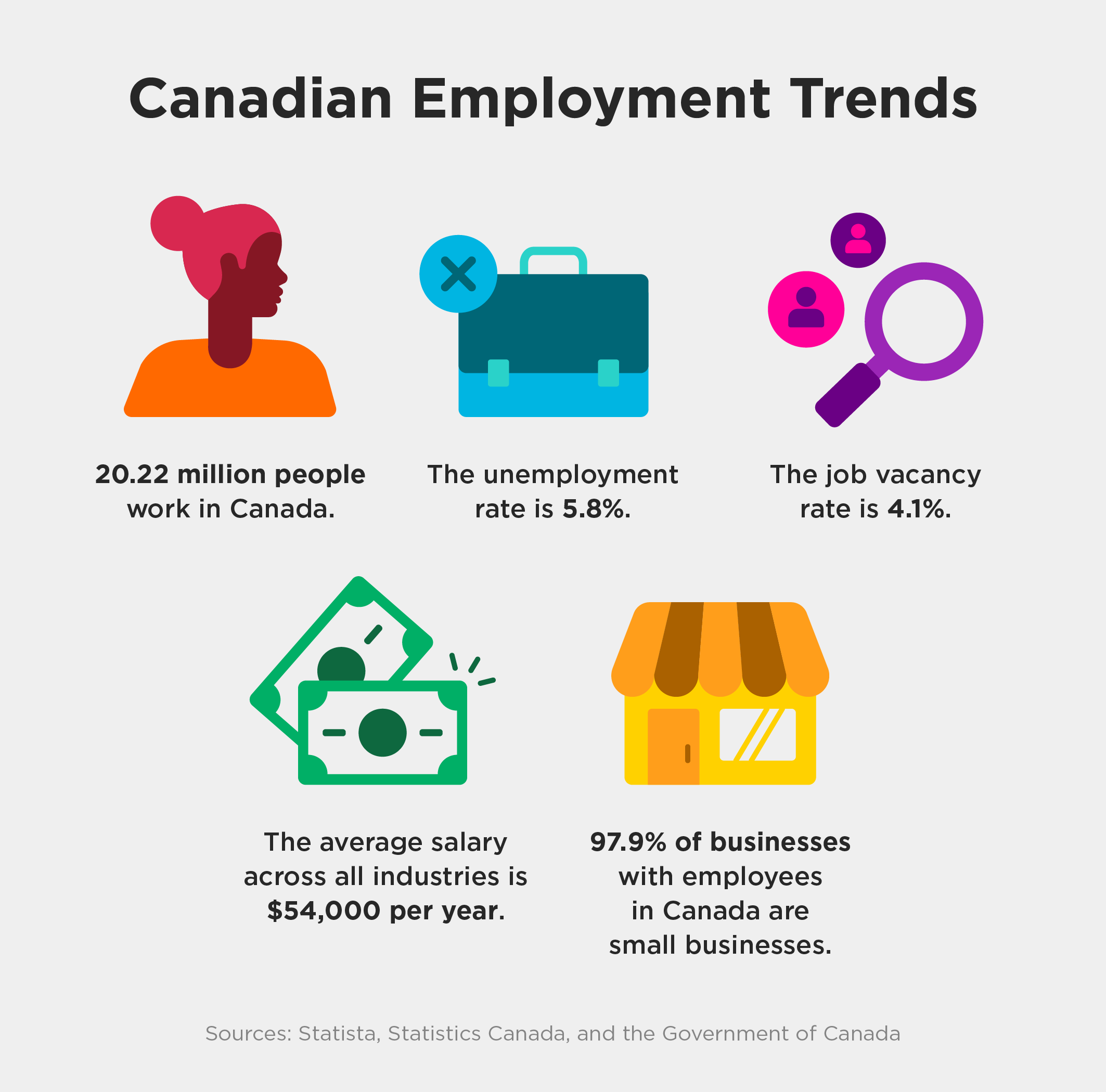51 Eye-Opening Canadian Employment Statistics By Industry for 2024

quick answer
Learn about key Canadian employment statistics by industry and how they may impact your job search and long-term career goals.
In This Article
Knowing how to get a job in Canada isn’t just who you know but what you know. Of course, you want to understand the role, skills, and culture of the workplace, but you also want to have a good understanding of the labour trends that may impact your job search.
Assessing Canadian employment statistics by industry – from business to agriculture – can reveal high-level trends and patterns within the job market in Canada. Understanding these trends can impact your effort to land your dream job or find meaningful work.
In this post, we’ll uncover some of the most illuminating employment statistics across the employment landscape. Use them to help inform your own hiring decisions and career choices. Read on to learn more about key job trends by industry.
Jump to:
|
Key Takeaways
|
To compile our list of Canadian employment statistics by industry, we reviewed data provided by the Government of Canada as well as other peer-reviewed and data-based sources. The information has all been verified by our own research and fact-checked by editors.
Canada has a challenging labour landscape, with as much as 41% of people seeking to switch careers or move provinces in favour of better job outcomes. While the job market has improved since the COVID-19 pandemic, there are more job seekers than open positions. Here’s a look at general employment trends in Canada.

There are many in-demand jobs in the business industry. Whether that means starting your own business as an entrepreneur or working for one of the many small businesses in Canada, there’s a lot to consider. Here’s a look at some key facts about business.
Interested in business administration? Explore Robertson’s course options, such as the Event Planning and Hospitality Diploma program.
For those interested in helping people and working with kids or young adults, education is a great post-secondary option. With many job opportunities and above-average salaries, a career in education can be rewarding in many ways. Here are facts about education in Canada.

Health care is a critical industry in Canada, facing a continual labour shortage. There is high demand in everything from pharmaceuticals and dental care to nursing. Here are some stats about health care jobs in Canada.
Interested in exploring an in-demand health care career? Become a Pharmacy Assistant with Robertson’s Diploma program.

Information technology (IT)is a growing industry within Canada, with above-average salaries and the development of new roles each year. Explore more information about the field below:
Want to learn more about starting a career in IT? Learn about our Computer Support Technician Diploma program.
Pharmaceuticals in Canada is a growing industry, with large hubs in Toronto, Vancouver, and Montreal. With several roles in the pharmacy field in high demand, it’s a great potential career choice. Learn more about working in pharmaceuticals below:
Interested in a career in one of the top in-demand health care positions? Explore our Pharmacy Technician Diploma program to learn more.

Agriculture is one of the primary industries in Canada, generating nearly 7% of Canada’s gross domestic product. Between primary agriculture — which involves working on a farm — food and beverage processing, retailers, and food service providers, agriculture makes up a massive portion of the Canadian labour market.
From the employment rate to the amount of debt a person has, education can play a significant role in job opportunities after graduation. Here’s an overview of the impact that post-secondary education has on graduates.
Having an education specific to a certain field can help you succeed in your career, as it will allow you to target your learning to meet industry needs. With a focus on hands-on learning and practical experience, Robertson College graduates have a higher-than-average employment rate for those with Certificates and Diplomas.
Learn how Robertson College can support your career goals with the Workforce Team.

In This Article
Once you take the first step, one of our Student Admissions Advisors will get in touch to better understand your goals for the future.
Apply Now